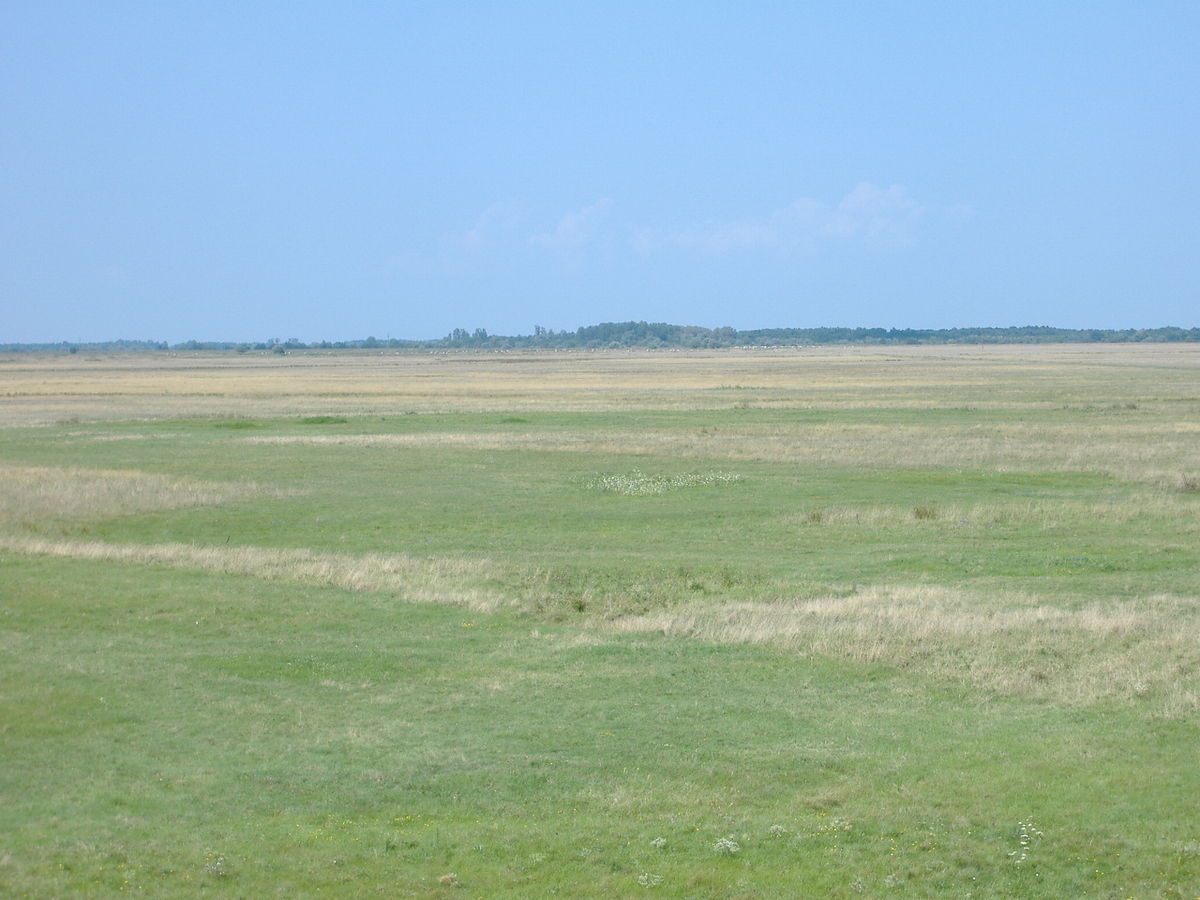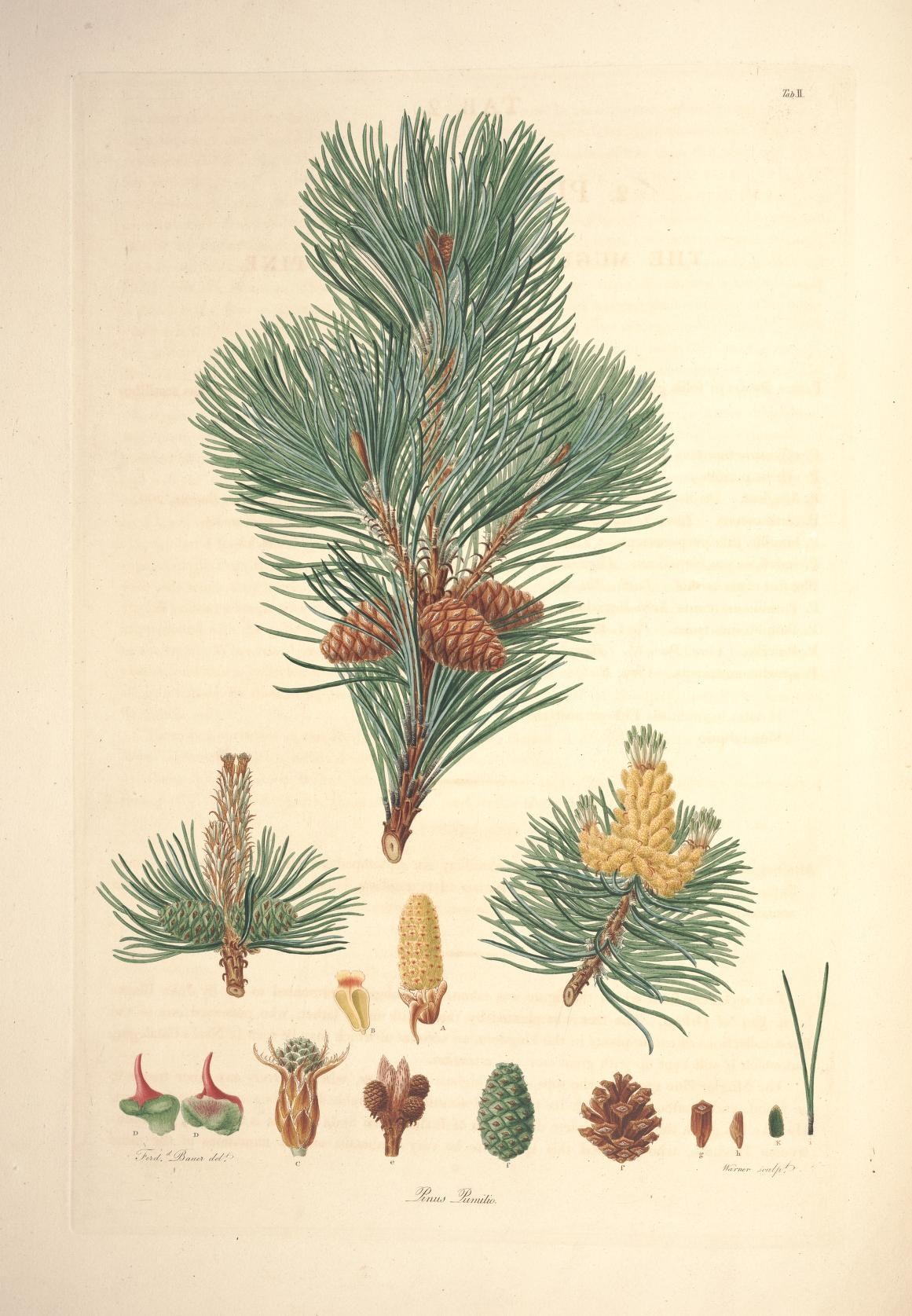
Anton Kerner von Marilaun
This post was coauthored with Bruce Hoagland
The study of climate and vegetation has taken new urgency in light of climate change. Researchers not only use vegetation to classify and map climate zones, but plants themselves have become the monitors of change in climate. In a famous example, blossoms have been appearing on Japanese cherry trees earlier in the year, providing clear evidence of a warming world. The study of the onset of flowering is part of the science of “phenology;” proxies based on phenology can provide evidence of a changing climate in locations where the temperature record may be spotty or uncertain. Phenological networks now abound, and citizen-scientists assist in the collection of data on climate change through programs such as the USA National Phenology Network and GLOBE (Global Learning and Observations to Benefit the Earth), among others.
These observations are a direct descendent of Anton Kerner von Marilaun’s recognition of climate’s impact on vegetation. Deborah Coen describes how Kerner determined that the boundaries for vegetation types and growth “resulted from the same effect: the limited duration of the growing season in each climate” (p. 280). But his research on the role of climate at a variety of scales also addressed the distribution of vegetation in the Austro-Hungarian Empire and beyond, leading Coen to rank Kerner as “a founder of the field of plant ‘sociology’, a cornerstone of modern ecology” (p. 276).
Kerner’s identification of the landscapes of the empire from “glacial peaks to ‘barren deserts’” foreshadows Wladimir Köppen’s 1884 development of a climate classification system. The Köppen classification is a vegetation-based system using temperature and precipitation to assign every place on the earth into one of five main groups (with additional subgroups). This classification (since modified by Geiger, and now referred to as the Köppen-Geiger classification) is the most commonly used world-wide climate identification system, and is featured in introductory physical geography and climatology textbooks around the globe.
Köppen’s’s expansion of Kerner’s “plant sociology” ideas has led to the detailed and thorough understanding of global climate necessary for identifying climate change. Using climate and other variables to predict the locations of plants and to identify areas where one would expect to see either native or non-native species is an area of high interest among ecologists. Maps projecting future plant distributions are also a critically important way to illustrate the potentially serious impacts of a changing climate on natural environments and ecosystems. Again, we see a glimpse of the future in Kerner’s scholarship.
Kerner also studied the effect of climate on plant morphology with observation and experimentation. First, he determined a specific plant-climate “signal” by linking the stature of vegetation to the harshness of the climate. For example, individuals of mugo pine (Pinus mugo) are dwarfed in harsh environments, but can grow several meters in height under better conditions. After noting that individuals of a certain species growing in valleys were larger than individuals of the same species in the mountains, Kerner experimented to see if those differences could be inherited. He planted seeds from the valley specimens in an alpine garden—but the plants did not grow as large, demonstrating the influence of climate.

Sherlock Holmes, by Sidney Paget / Public domain
Climate also figured in Kerner’s explanation of “foundling” plants, or what are now referred to as “disjunct populations”. He employed meticulous meteorological measurements and determined that the prevailing wind patterns and barriers to movement created by the geography of the Alps would prevent seeds from travelling the distances required to establish the different populations he observed. He also considered but rejected the possibility that humans might have transported “foundling” plants. Thus, much like Sherlock Holmes’ dictum that “once you have eliminated the impossible, whatever remains, however improbable, must be the truth,” he was able to conclude that the only feasible explanation was that the climate in those locations was different in the past. This breakthrough was one of the first key steps in our ability to use climate proxy data to reconstruct previous climates, and also to use existing vegetation/climate relationships to help predict species distribution in the future.
Kerner’s final contribution to plant ecology was an examination of the relevant scale of analysis. Coen notes that Kerner was initially focused on “the spatial limits to the distribution of species, and with the local conditions of soil and climate that explained those boundaries” (p. 293). This conceptual framework was necessary to produce the Floral Map of Austria-Hungary, for example. Along with other researchers of his day, he also began operating at the scale of individual plants and their ecology, in addition to addressing larger-scale issues of distribution patterns. While many others were zooming in to investigate individual plants, it was Kerner who realized that this high-resolution analysis could be used as a historical lens through which to observe not only the plants themselves, but also the historical conditions that facilitated their development.
In addition to Kerner’s scientific advancements, two other aspects of his career are still relevant today: his ability to effectively communicate scientific information, and his recognition of the relationship between the physical environment and people’s perceptions of and personal involvement with that environment. He described the importance of public outreach by declaring that he intended to “enliven and awaken interest for floristics in the widest circles of the fatherland by including all those who take an interest in it and by means of the widest possible distribution of the results of the collective work” (p. 298). According to Coen, in an effort to promote citizen-driven environmental protection, Kerner “quoted the German Poet Emanuel Geibel: ‘All we need, we have been blessed to receive from our fathers; it falls to us to prepare the ground for those who follow’” (p. 281).
Kerner’s lessons are critically important today: despite the increasing evidence regarding the severity of the impact of climate change, the denial of these facts seemingly is increasing as well. Scientists should carefully heed Kerner’s words and follow his example if we are to effectively communicate science to the lay public, interested stakeholders, and policymakers.

Poszta, by Lily15 – Hungarian Wikipedia, CC BY-SA 3.0
As part of his desire to build a record of the plant communities of the Austrian-Hungarian “fatherland”, Kerner travelled extensively throughout the empire. At first he disdained the culture of the puszta (the Hungarian steppe), which he saw as barren because it was “barren of trees” (p. 284). However, after a five-year stint in Buda, he “reached a new interpretation of the culture of the steppe” (p. 285). He found that Hungarian folk songs “translated the ‘elegiac’ sounds of the Hungarian steppe” (p. 285). The Hungarians, he realized, expressed “a reverence for the natural world no less ‘exalted than the regard of the Swiss for their Alps” (p. 285). This may have come as a surprise to him—but certainly would not be a surprise to anyone who has travelled across western Oklahoma and seen the inherent majesty in mile after mile of waving wheat or the beauty of the vastness across the plains. This would have also been no surprise to Y.F. Tuan, who wrote about the inherent and strong affective bond between people and place in Topophilia[1], a classic tome in human geography.
Coen subtitles her book “Science, Empire, and the Problem of Scale” and the theme of scale is something that she explores in this chapter on the life and exploits of Anton Kerner Von Marilaun. It is evident that his breakthroughs in plant ecology, a clearer identification of the vegetation/climate relationship as well his connecting plant “foundlings” with past climate change are all linked to his ability to perform research at different scales, both temporally and spatially.
Speaking personally, however, as a scientist and Geographer who has spent much of his research career focusing on reducing the harmful impacts of climate variability, climate change, and in identifying effective mitigation efforts through the adoption of renewable energy, Kerner’s dedication to the scientific method and his passion for effectively communicating science, are the aspects of his career which are most relevant to me today.
Finally, as a grandson of a “Grapes of Wrath” evacuee from Oklahoma to California, and dedicated transplant back to Oklahoma for the past twenty-five years, I find his commentary on the puszta and its natural, plant, and human culture eminently relatable. I think we can all learn from Kerner’s switch from disdain to appreciation of the plains. Coen even suggests he experiences this as a kind of reverence (p. 289). I’ll close with lines Coen quotes from the Hungarian Nationalist poet Sandor Petofi, comparing the puszta to more conventionally inspiring mountain landscape—she notes that Kerner translated them into German:
What are you to me, land of the grim Carpathains,
For all your romantic wild-pine forest?…
My home and my world are there,
In the Alfold, flat as the sea,
From its prison my soul soars like an eagle,
When the infinity of the plains I see (pp. 288)
[1] Tuan, Y. F. 1974. Topophilia: A Study of Environmental Perception, Attitudes and Values. New York: Columbia University Press.
Scott Greene and Bruce Hoagland are both Professors in the Department of Geography and Environmental Sustainability at the University of Oklahoma.


